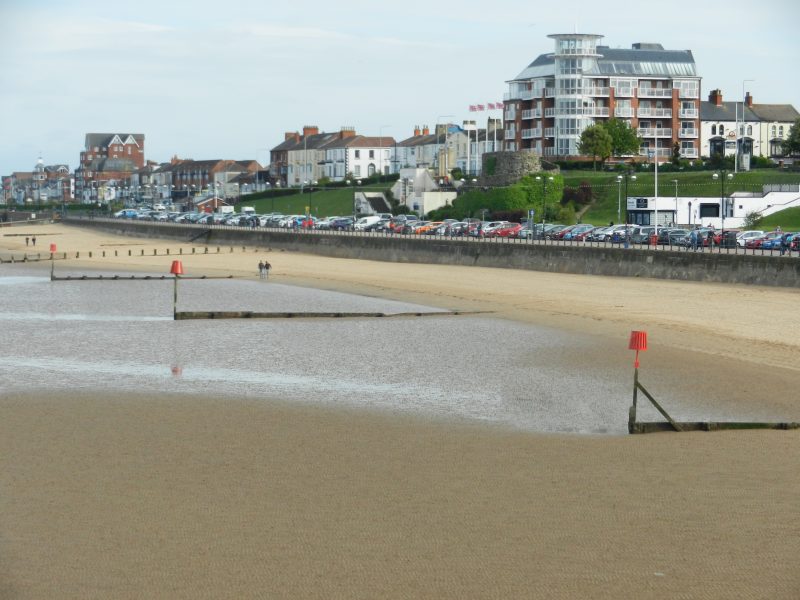
Today’s photo is of Cleethorpes seafront (taken a few years ago); none of the workers being ferried out to work on Haile fort would have seen such a scene but rather a part promenade, the railway station, sand dunes along the top of the beach and just a few houses.
The German battleship attacks on Scarborough and Hartlepool in December 1914 had given added impetus to the need for improved defences at the Humber mouth.
Fast forward to 1917 and Bull and Haile forts were still under construction; work included a narrow-gauge railway running around the top of each fort on which ran a crane which hauled-up chalk for the foundations (this was not chalk from the bedrock but from barges bringing chalk quarried at Hessle, Barton or South Ferriby), while nearer the middle of the platform a steam-powered pile driver worked.
The writer of the article in Blackwood’s Magazine is proud to record that no lives were lost during construction. Furthermore, the worker’s accommodation included central heating, baths, lighting and cooking facilities. A supply of fresh water from the chalk bedrock was supplied by a narrow well bored 100 fathoms below the platforms.
The two Humber forts were only completed near the end of the War, however, the British naval blockade of north German ports after the Battle of Jutland had brought comparative peace to the North Sea (ex-German Ocean).
In addition to the forts a diamond shaped heavy gun emplacement was constructed at the southern end of Spurn Point along with workers and military personnel housing and ‘dummy’ anti-aircraft guns.
Hearsay evidence has it that an anti-submarine chain was installed between the two forts out in the waters of the Estuary; I don’t know of documentary evidence, but it would seem to have been a good idea in both World Wars.
In time of war no expense is spared.